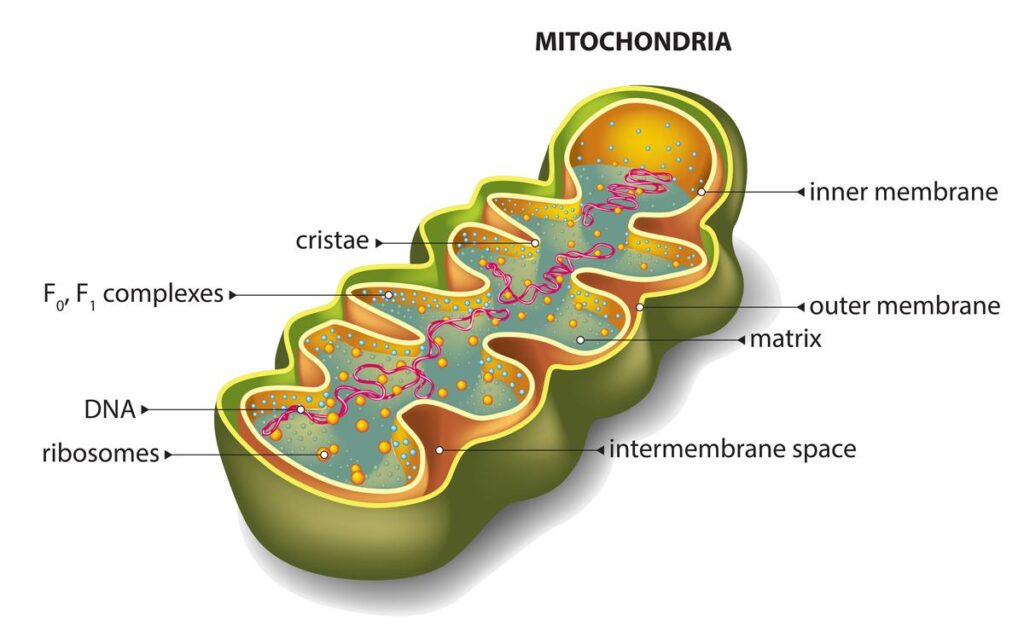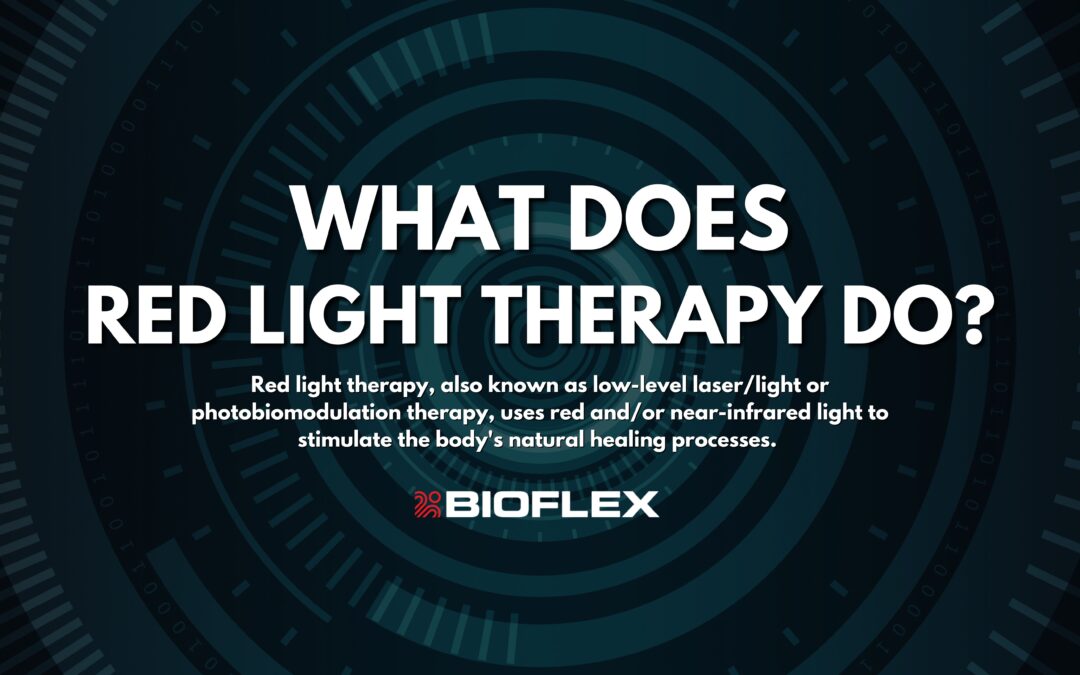Red light therapy, also known as low-level laser/light or photobiomodulation therapy, uses red and/or near-infrared light to stimulate the body’s natural healing processes.
Let’s explore what red light therapy is, how it works, and some of the ways it may be used to enhance overall wellness.
 For those suffering from joint and muscle pain, red light therapy has also been found to be an effective pain relief treatment that delivers light energy directly to the affected areas including joint capsules, tendons and ligaments as well as joints and muscle. With these benefits and more, it’s no wonder that red light therapy is becoming an increasingly popular treatment option for a variety of health issues.
For those suffering from joint and muscle pain, red light therapy has also been found to be an effective pain relief treatment that delivers light energy directly to the affected areas including joint capsules, tendons and ligaments as well as joints and muscle. With these benefits and more, it’s no wonder that red light therapy is becoming an increasingly popular treatment option for a variety of health issues.
 Red light therapy is known to improve muscle tissue health and aid in recovery from sports injuries and DOMS (delayed onset muscle soreness). This non-invasive therapy stimulates the release of nitric oxide (NO), allowing for vasodilation and thus better oxygenation, nutrient delivery, toxin removal, and cellular healing.
Red light therapy also encourages the myosatellite cells that helps muscles repair after injuries including micro-damage from DOMS. As a result, muscle cells are able to perform better, improving strength and performance.
Red light therapy reduces muscle inflammation and soreness, allowing athletes to recover faster and return to training quicker than they would without treatment. With these benefits, it’s no wonder why red light therapy is a popular choice among athletes in the fitness world.
Red light therapy is known to improve muscle tissue health and aid in recovery from sports injuries and DOMS (delayed onset muscle soreness). This non-invasive therapy stimulates the release of nitric oxide (NO), allowing for vasodilation and thus better oxygenation, nutrient delivery, toxin removal, and cellular healing.
Red light therapy also encourages the myosatellite cells that helps muscles repair after injuries including micro-damage from DOMS. As a result, muscle cells are able to perform better, improving strength and performance.
Red light therapy reduces muscle inflammation and soreness, allowing athletes to recover faster and return to training quicker than they would without treatment. With these benefits, it’s no wonder why red light therapy is a popular choice among athletes in the fitness world.
How does red light therapy work?
Red and near infrared light therapy targets the mitochondria in our cells, which are responsible for producing energy. The therapy works by exposing the skin and other parts of the body to low-energy red or infrared light, which stimulates the mitochondria to produce more ATP, the energy currency of our body. ATP levels are depleted when cells and tissues are inflamed or injured. This increase in ATP production can improve cellular function and support cellular regeneration, resulting in benefits such as reduced inflammation and pain, improved wound healing, collagen production and even hair growth. Red light therapy also increases blood flow and the formation of new blood vessels, which can further support healing and rejuvenation of the body’s tissues. Overall, red light therapy offers a natural, non-invasive way to promote healing and improve overall health and wellness. As more research supports the effectiveness of red light therapy, it has become an increasingly popular option for those looking to improve their overall health and well-being.This causes the mitochondria to produce more ATP (adenosine triphosphate)
This increase in ATP production can provide a significant boost to our cells’ overall functioning and promote healing and growth processes throughout our bodies. For those suffering from joint and muscle pain, red light therapy has also been found to be an effective pain relief treatment that delivers light energy directly to the affected areas including joint capsules, tendons and ligaments as well as joints and muscle. With these benefits and more, it’s no wonder that red light therapy is becoming an increasingly popular treatment option for a variety of health issues.
For those suffering from joint and muscle pain, red light therapy has also been found to be an effective pain relief treatment that delivers light energy directly to the affected areas including joint capsules, tendons and ligaments as well as joints and muscle. With these benefits and more, it’s no wonder that red light therapy is becoming an increasingly popular treatment option for a variety of health issues.
ATP is the energy currency of our body and is essential for all cellular processes
ATP, or adenosine triphosphate, is often referred to as the energy currency of our body. It’s the molecule that powers all the cellular processes, including muscle contractions, protein synthesis, and nerve impulses. When tissues are injured or inflamed, ATP levels decline and the metabolism decreases. Red light therapy targets the mitochondria, which are the organelles responsible for producing ATP. By stimulating the mitochondria, red light therapy can help enhance ATP production, which is essential for cellular respiration and overall bodily function. ATP is used for energy transfer in numerous metabolic processes, and without it, our body’s systems would not be able to repair injuries and decrease inflammation. That’s why red light therapy’s ability to support ATP production can have a significant impact on reducing inflammation, promoting wound healing, and even improving skin rejuvenation and hair growth.Red light therapy also increases blood flow and the formation of new blood vessels
Apart from boosting cellular energy production, red light therapy also has been shown to increase blood flow and promote the formation of new blood vessels called capillaries. This increased circulation can lead to improved wound healing, reduced inflammation and pain. For those seeking relief from joint and muscle pain, red light therapy can also aid in the delivery of oxygen and nutrients to the affected area, aiding in the healing process.Red light therapy for muscle tissue
 Red light therapy is known to improve muscle tissue health and aid in recovery from sports injuries and DOMS (delayed onset muscle soreness). This non-invasive therapy stimulates the release of nitric oxide (NO), allowing for vasodilation and thus better oxygenation, nutrient delivery, toxin removal, and cellular healing.
Red light therapy also encourages the myosatellite cells that helps muscles repair after injuries including micro-damage from DOMS. As a result, muscle cells are able to perform better, improving strength and performance.
Red light therapy reduces muscle inflammation and soreness, allowing athletes to recover faster and return to training quicker than they would without treatment. With these benefits, it’s no wonder why red light therapy is a popular choice among athletes in the fitness world.
Red light therapy is known to improve muscle tissue health and aid in recovery from sports injuries and DOMS (delayed onset muscle soreness). This non-invasive therapy stimulates the release of nitric oxide (NO), allowing for vasodilation and thus better oxygenation, nutrient delivery, toxin removal, and cellular healing.
Red light therapy also encourages the myosatellite cells that helps muscles repair after injuries including micro-damage from DOMS. As a result, muscle cells are able to perform better, improving strength and performance.
Red light therapy reduces muscle inflammation and soreness, allowing athletes to recover faster and return to training quicker than they would without treatment. With these benefits, it’s no wonder why red light therapy is a popular choice among athletes in the fitness world.
